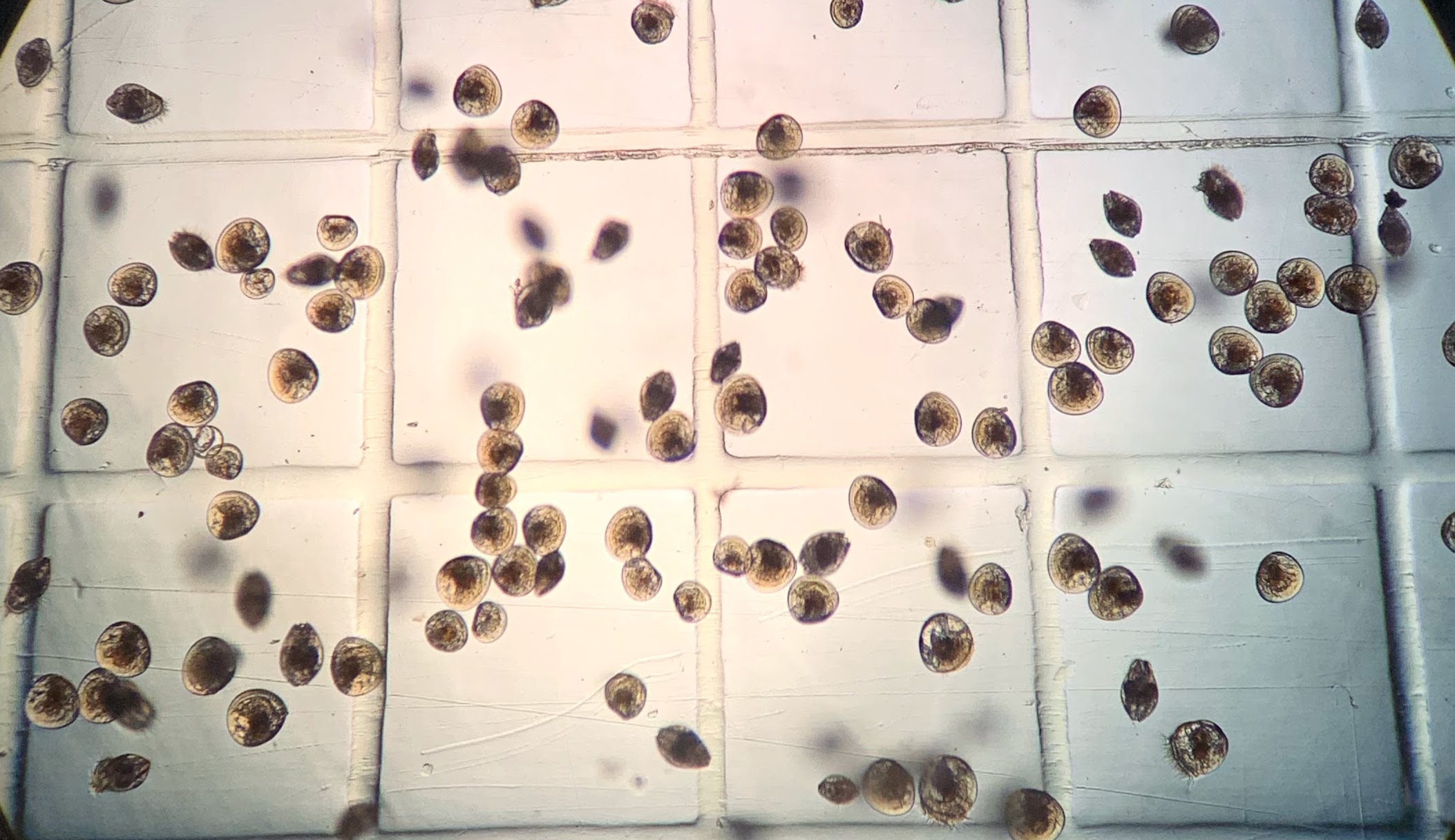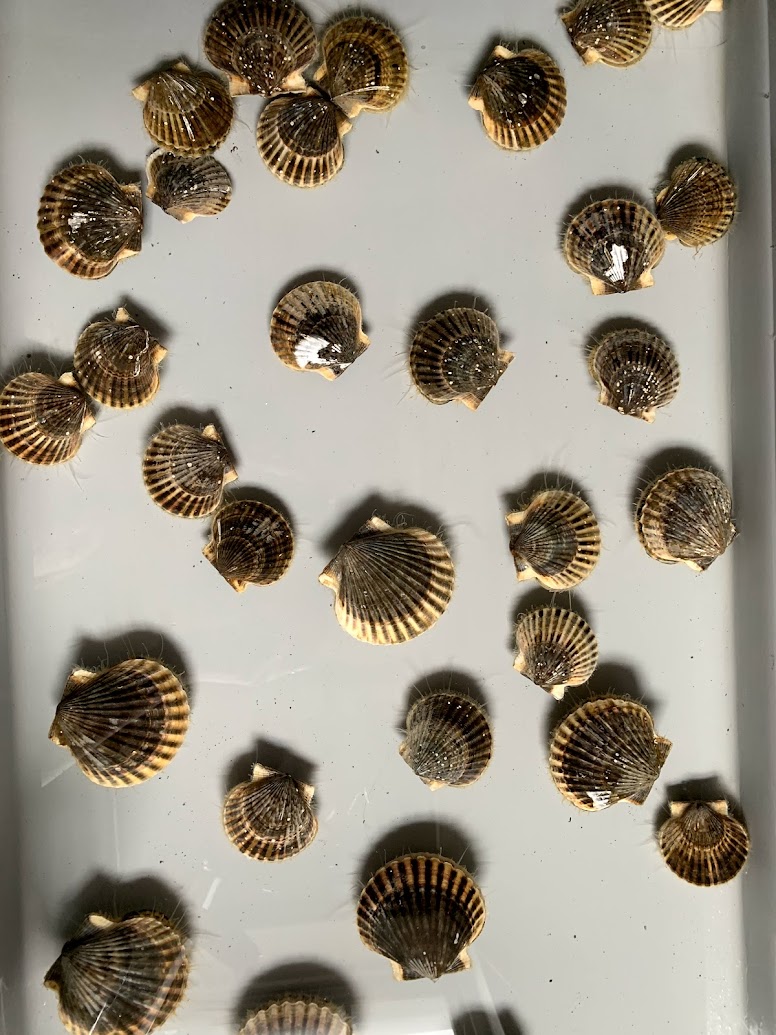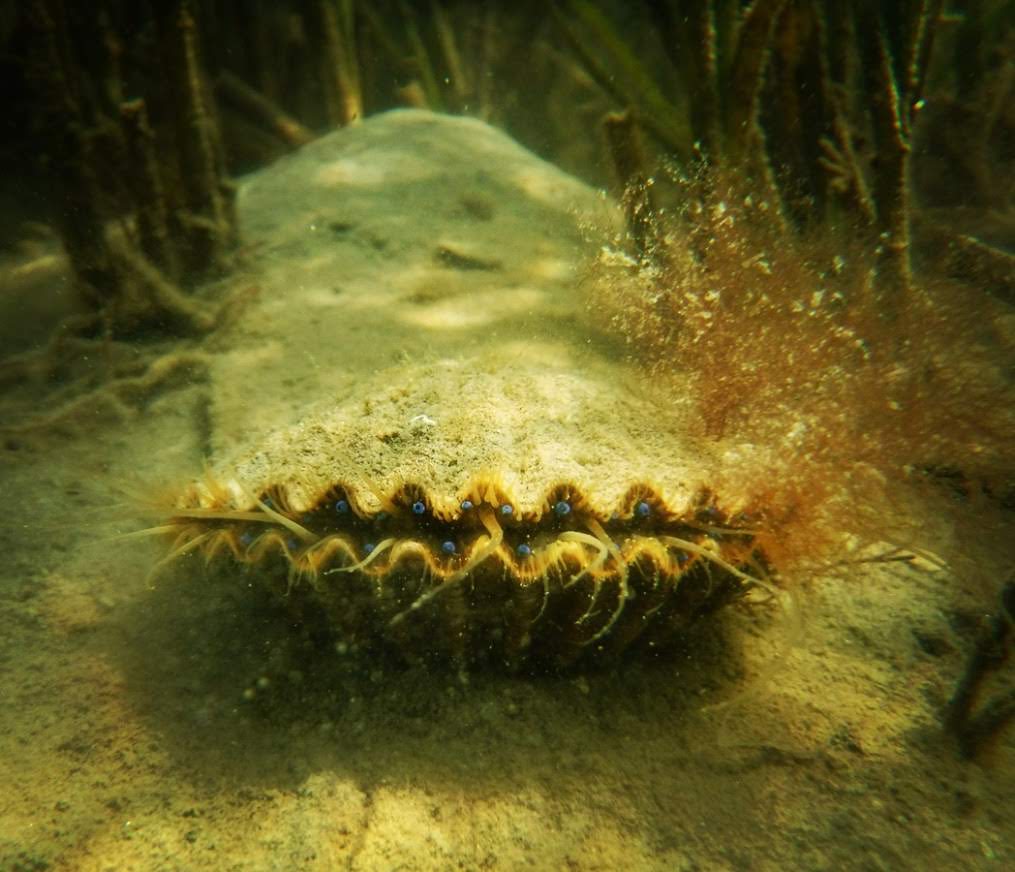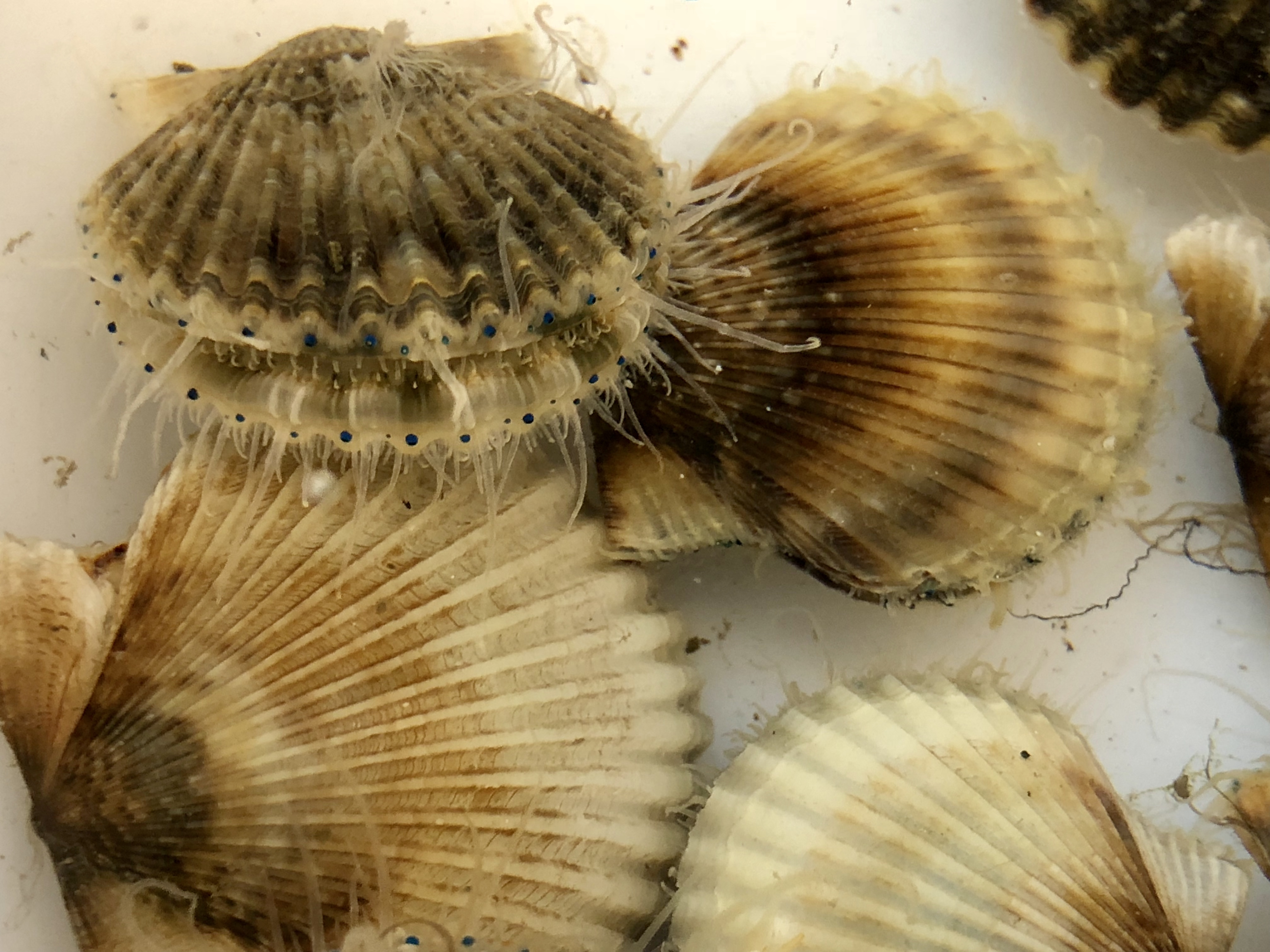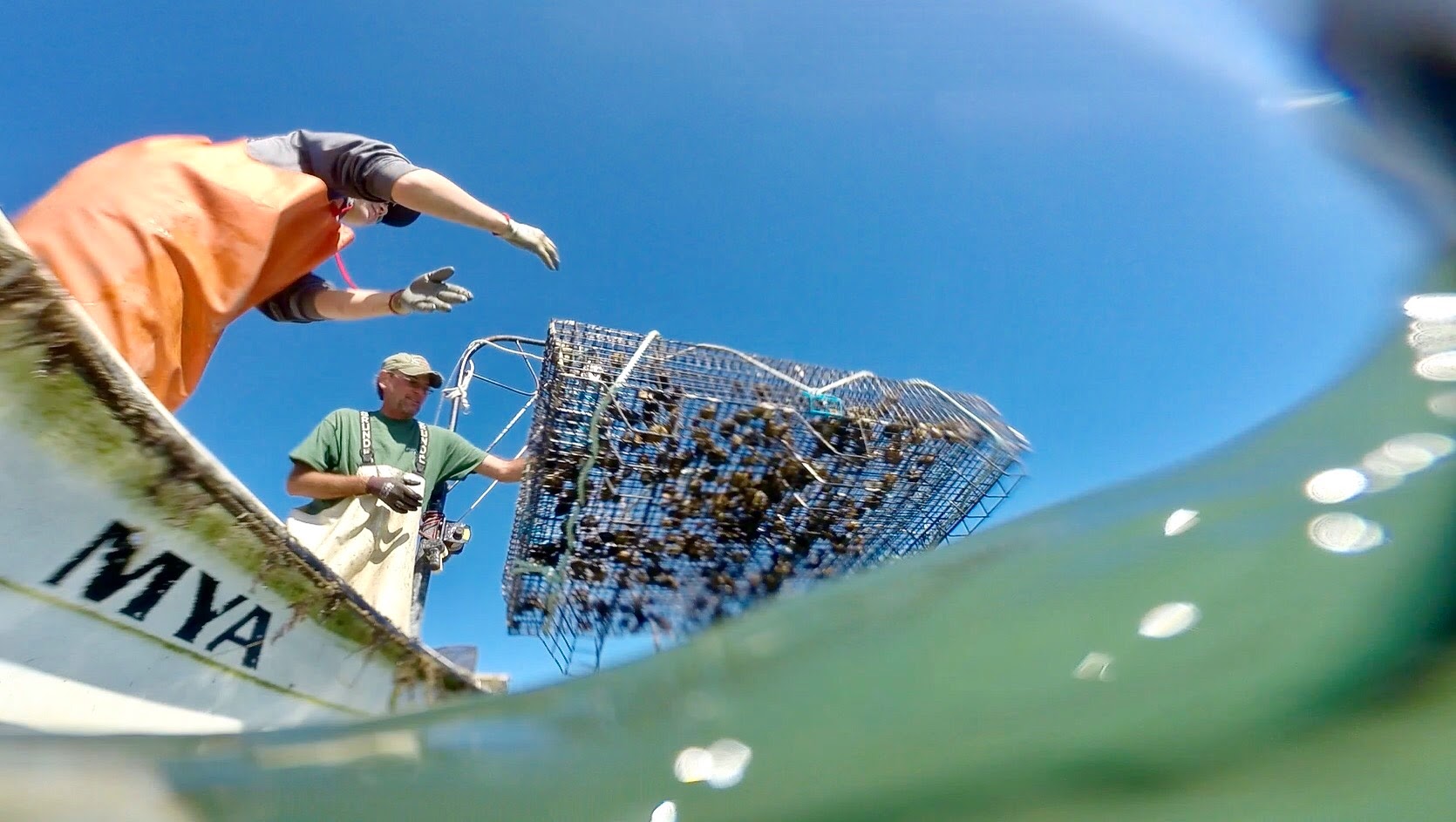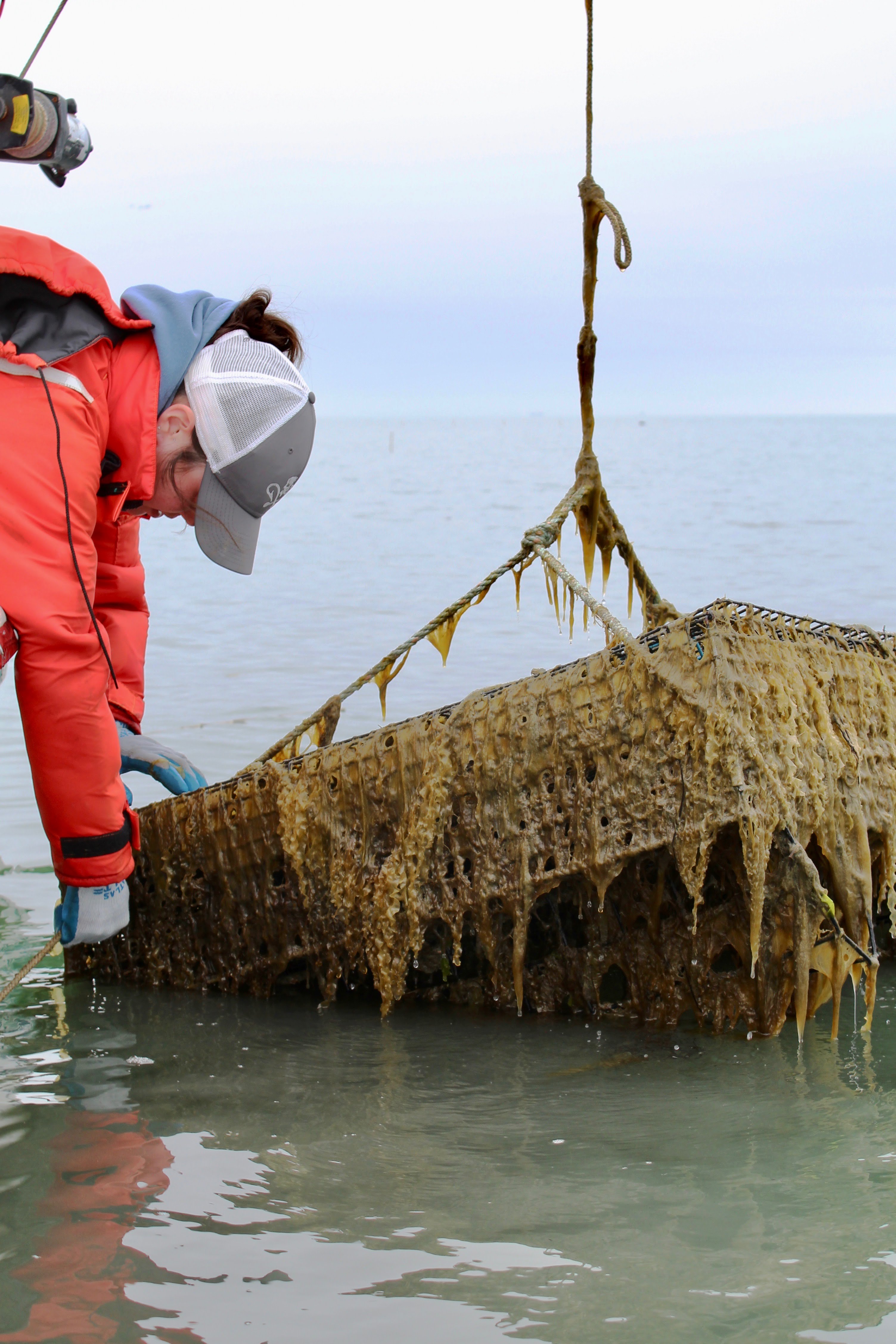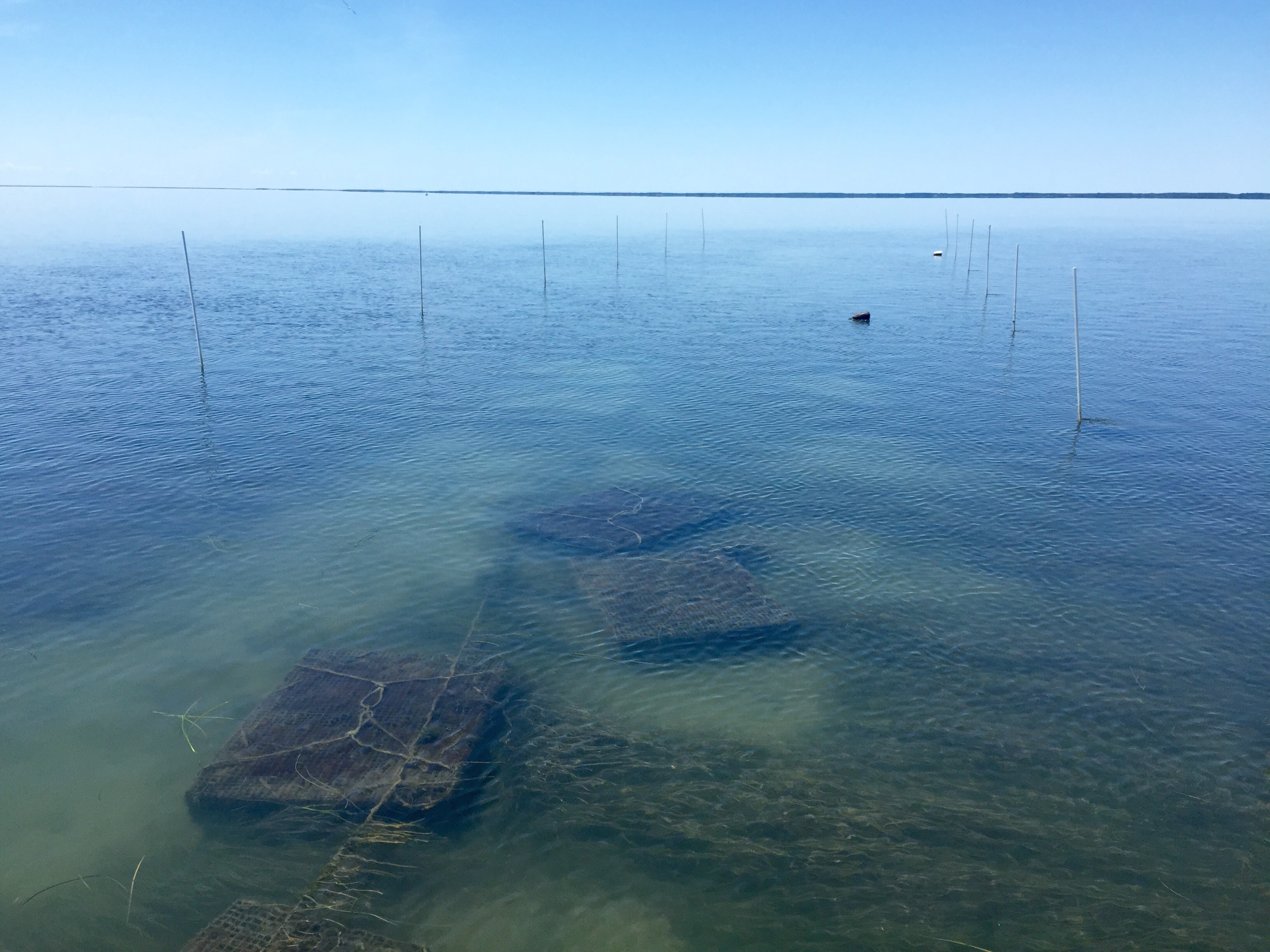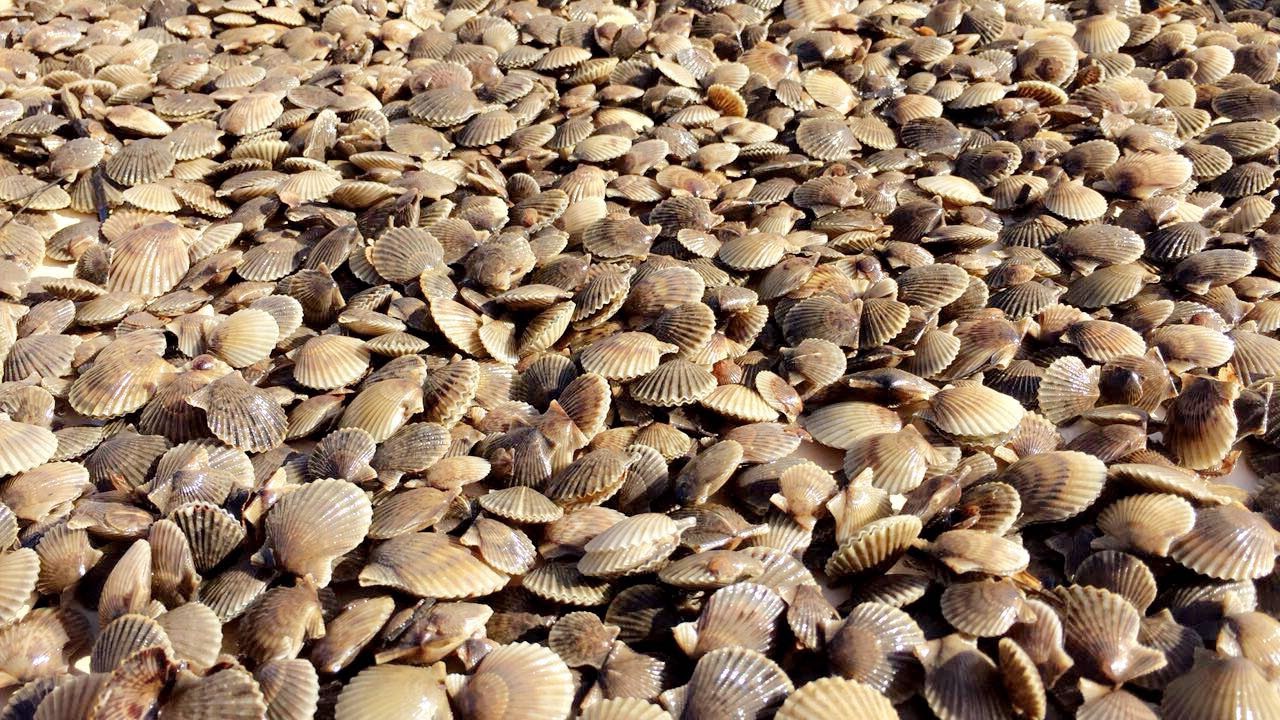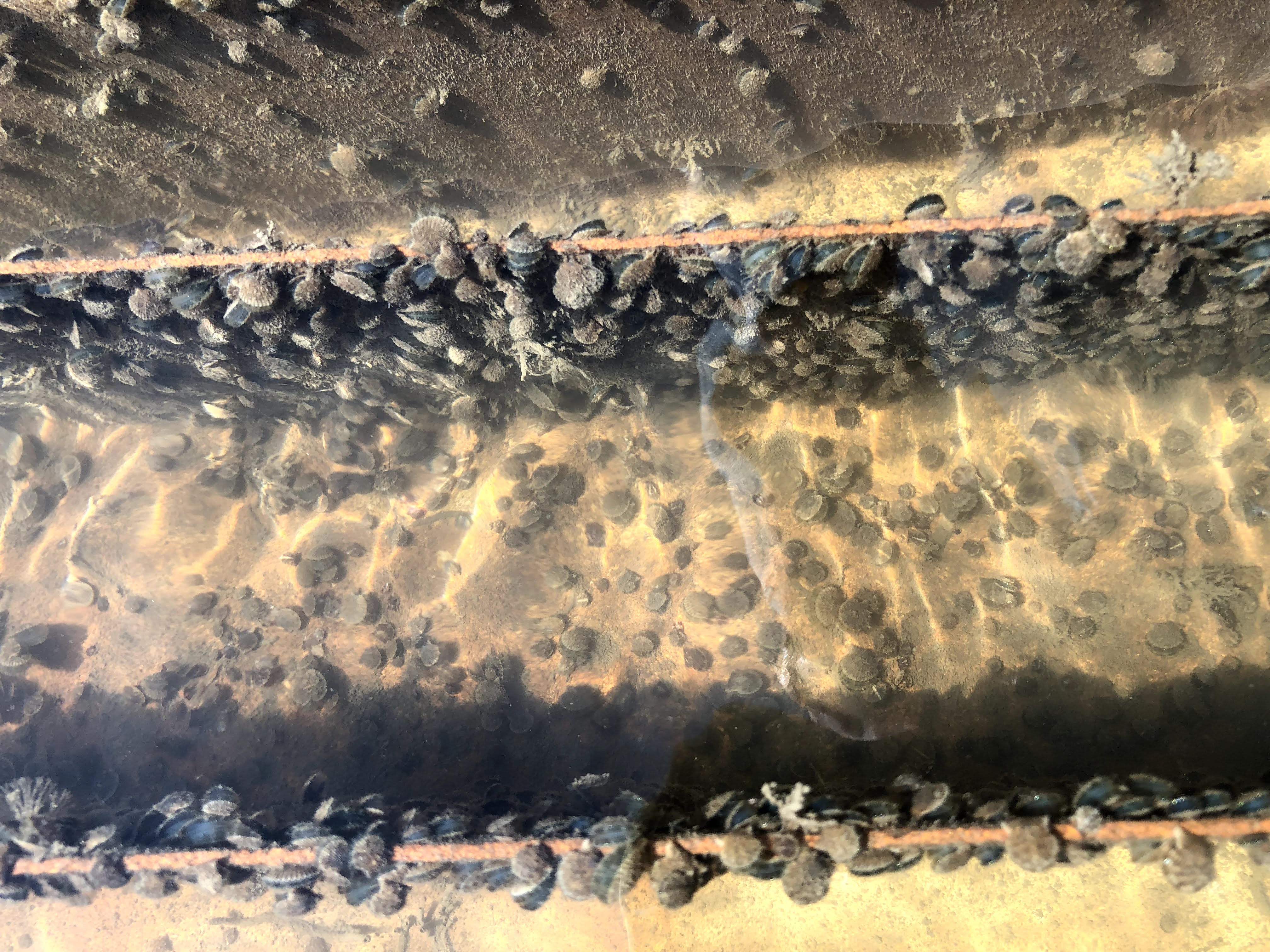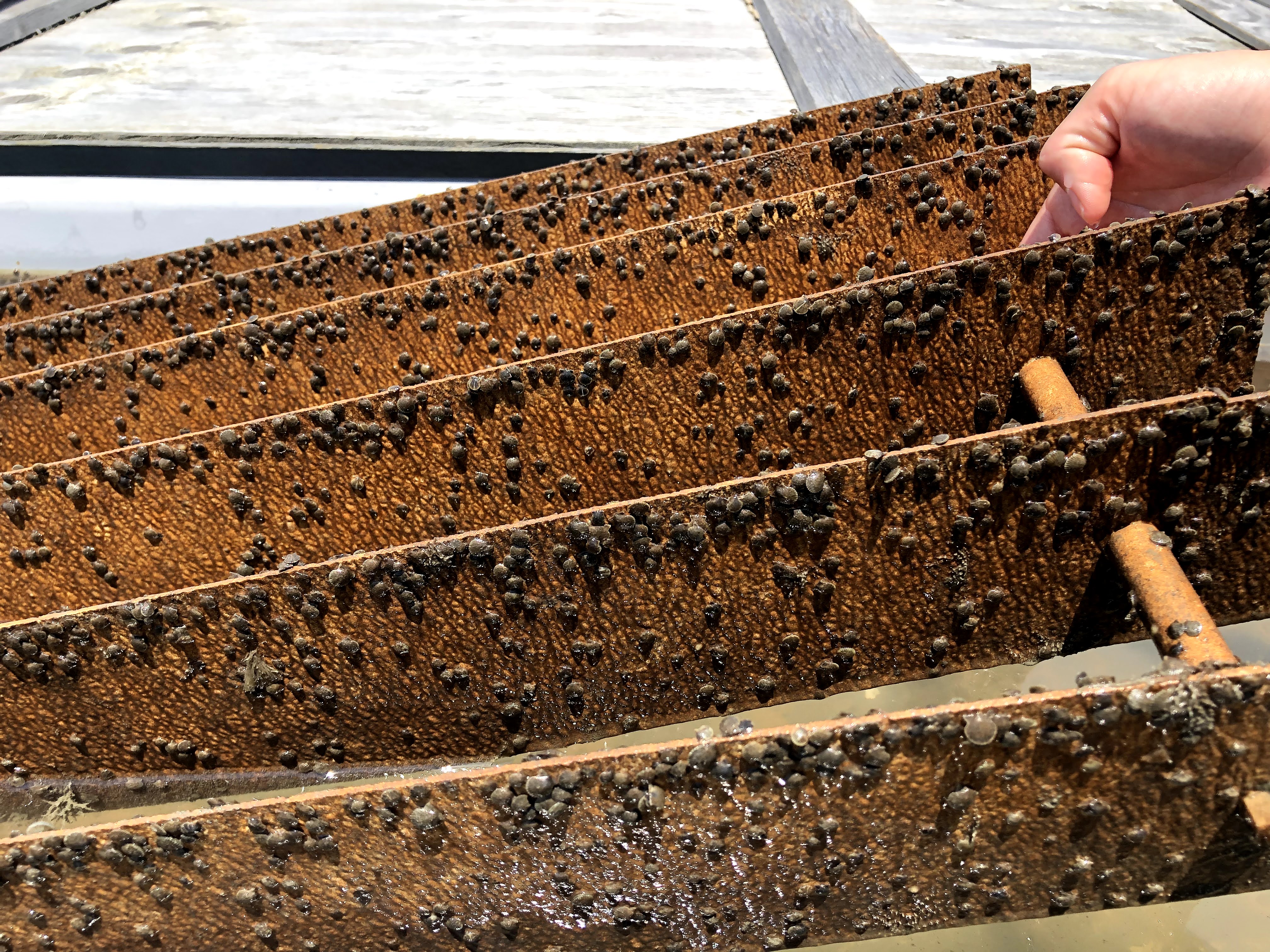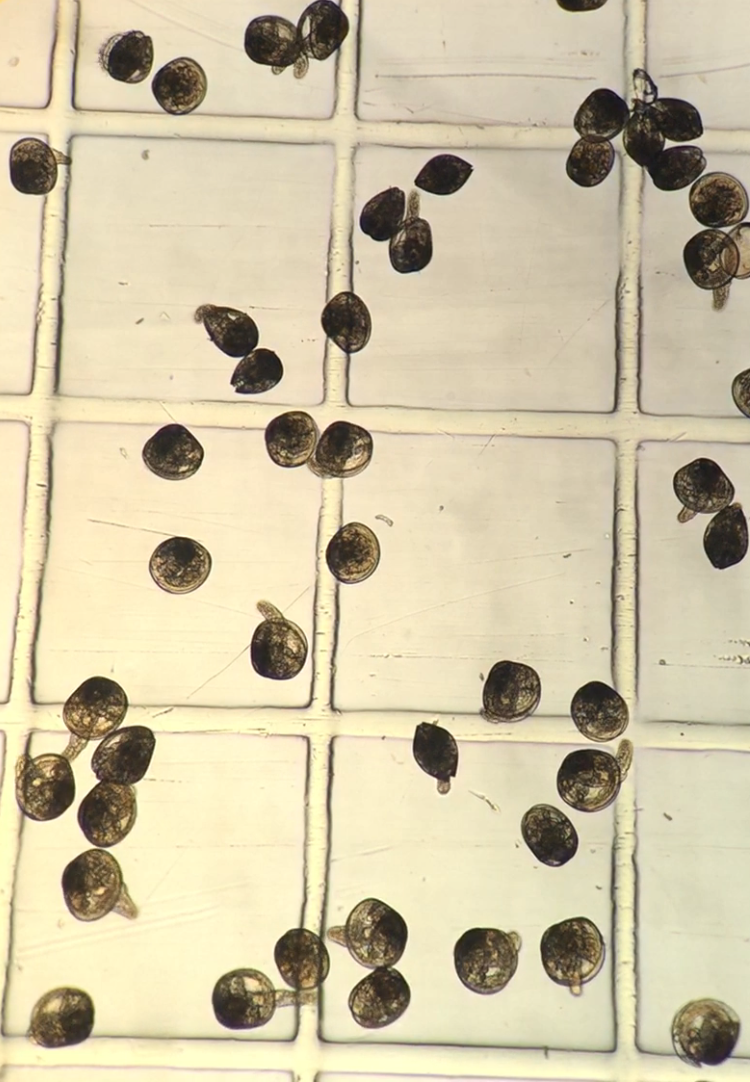Bay Scallops
Aquaculture Production of Bay Scallops, Argopectens irradians
Historically, VIMS ESL has been heavily engaged in the aquaculture of bay scallops, Argopecten irradians. Michael Castagna was instrumental in developing methods for the culture of this species in the 1960s and ‘70s at ESL. In the ‘80s and ‘90s, Mike Oesterling continued to research and improve upon bay scallop culture, but the culmination of this work could not meet a market price point that would sustain commercial activity.
Following the highly successful seagrass restoration work on the seaside of Virginia’s Eastern Shore in the early 2000s, VIMS ESL re-engaged in bay scallop culture as a part of a local, long-term restoration effort. ESL has been spawning and growing bay scallops each year since 2009 as a part of this restoration.
While clams and oysters dominate the vast majority of Virginia’s shellfish aquaculture, alternative shellfish species are a topic of discussion for the local aquaculture industry. Aquaculture of bay scallops continues to capture interest and stimulate attempts to develop production for commercialization of the species. Shellfish aquaculture techniques vary between species, and VIMS ESL has been working to address specific roadblocks in bay scallop culture. In order for bay scallops to be grown successfully at commercial scale, it is essential that catered techniques be developed to accommodate the unique behavior and anatomy specific to the bay scallop. Various rearing and handling techniques have been applied to scallop culture in hopes of making this a more efficient, profitable business venture for hatcheries or growers interested in scallop production.
Promotion of bay scallop culture in the private industry further supports restoration efforts by increasing regional capacity and expertise in scallop production. VIMS ESL has been providing bay scallop seed to local growers for several years. These growers incorporate the small scallops into their existing operations to test different gear types or grow out methods. They collect and share valuable performance data with ESL staff for analysis and further development of the bay scallops as an aquaculture product.


